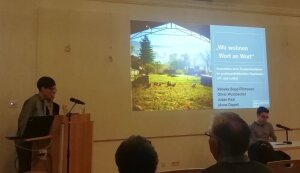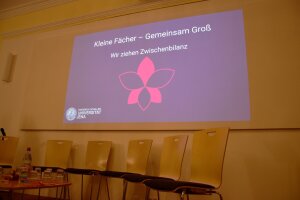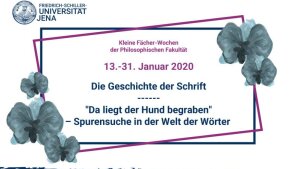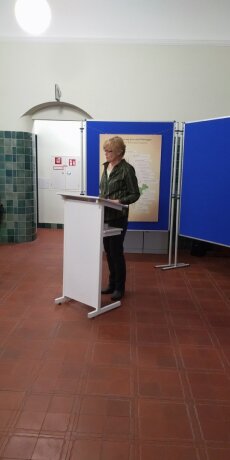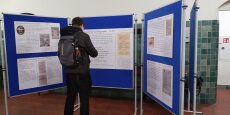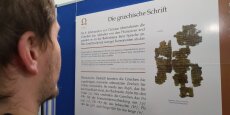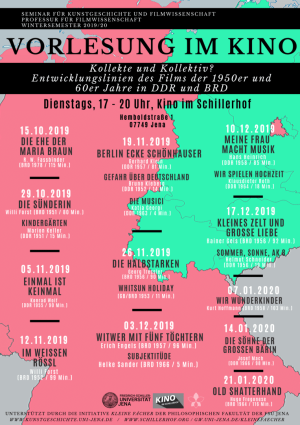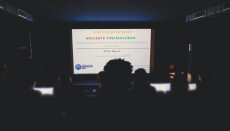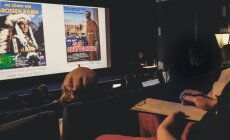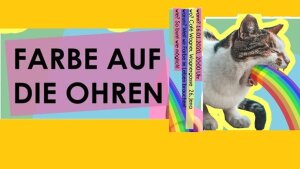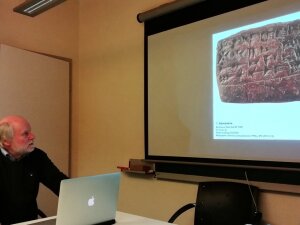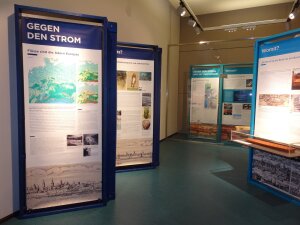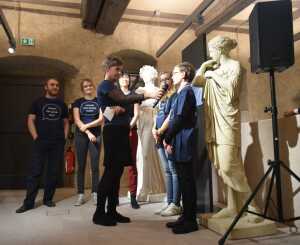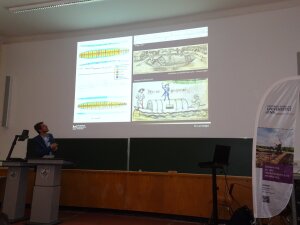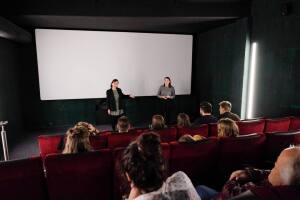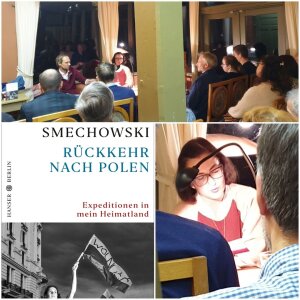Retrospect
-
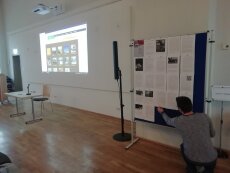
Last preparations
Image: Koordination Kleine Fächer-Wochen -
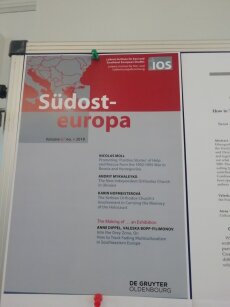
Paper in Journal "SÜDOSTEUROPA 67.4, 2019"
Image: Koordination Kleine Fächer-Wochen -
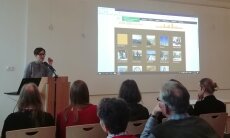
Introducing Words by Jun.-Prof. Dr. Valeska Bopp-Filimonov
Image: Koordination Kleine Fächer-Wochen -
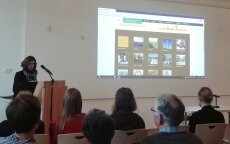
Dr. Ira Spieker (Institute for Saxon History and Ethnology) presenting the project "1989 revisited"
Image: Koordination Kleine Fächer-Wochen -
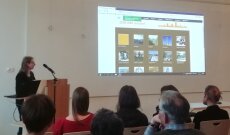
Anna Rausch treated the topics "Eichplatz", "Old Town of Jena", "JenTower"
Image: Koordination Kleine Fächer-Wochen -
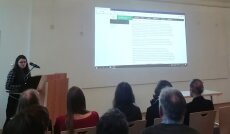
Laura Rommel applied herself to study the district of "New Lobeda" and its public art
Image: Koordination Kleine Fächer-Wochen -
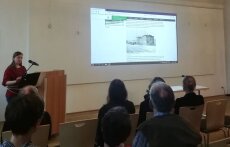
Maxi Fücker focused on the Saalbahnhof of Jena
Image: Koordination Kleine Fächer-Wochen -
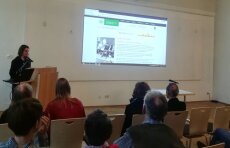
Eva Dieckmann examined Jena's Punk Scene
Image: Koordination Kleine Fächer-Wochen -
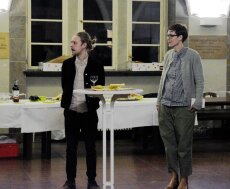
Exhibitions' Opening and Revival of "We live Word-to-Word" by Jun.-Prof. Dr. Valeska Bopp-Filimonov and Oliver Wurzbacher
Image: Koordination Kleine Fächer-Wochen -
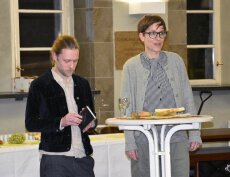
Exhibitions' Opening and Revival of "We live Word-to-Word" by Jun.-Prof. Dr. Valeska Bopp-Filimonov and Oliver Wurzbacher
Image: Koordination Kleine Fächer-Wochen -
Insight into the exhibition
Image: Koordination Kleine Fächer-Wochen -
Insight into the exhibition
Image: Koordination Kleine Fächer-Wochen
-

Section through the series of events
Image: Koordination Kleine Fächer-Wochen -

Interview with representatives of the Rare Disciplines
Image: Koordination Kleine Fächer-Wochen -
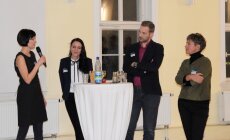
Interview with representatives of the Rare Disciplines
Image: Koordination Kleine Fächer-Wochen -
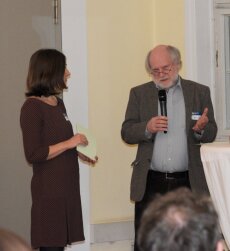
Interview with representatives of the Rare Disciplines (Ancient Oriental Studies)
Image: Koordination Kleine Fächer-Wochen -
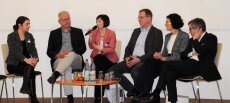
Interview with the University's Administration
Image: Koordination Kleine Fächer-Wochen -

Interview with the University's Administration
Image: Koordination Kleine Fächer-Wochen -
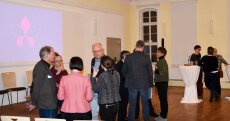
Animated conversation to conclude the evening
Image: Koordination Kleine Fächer-Wochen -
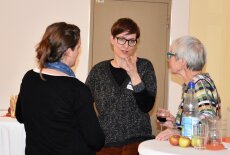
Animated conversations to conclude the evening
Image: Koordination Kleine Fächer-Wochen
-
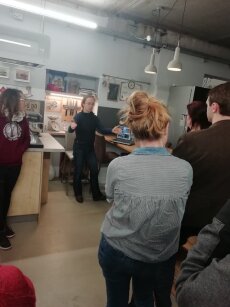
Prof. Dr. Forker explains the origin of Khinkali
Image: Koordination Kleine Fächer-Wochen -
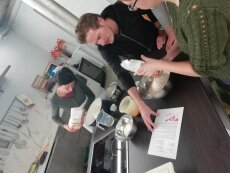
Making the Khinkali dough
Image: Koordination Kleine Fächer-Wochen -
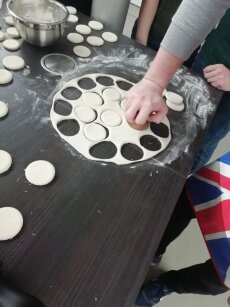
Cutting out the dough pieces
Image: Koordination Kleine Fächer-Wochen -
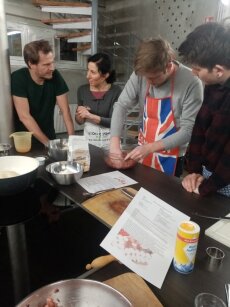
Filling 1: Minced Meat
Image: Felix Anker -
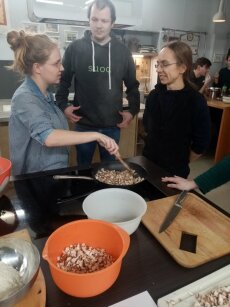
Filling 2: fried mushrooms, potatoes, parsley
Image: Felix Anker -
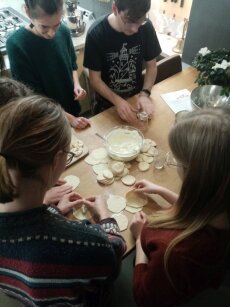
Filling 2: Curd
Image: Felix Anker -
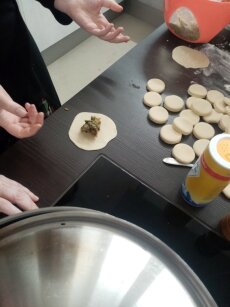
Filling the dough pieces. A level tablespoon is enough
Image: Felix Anker -
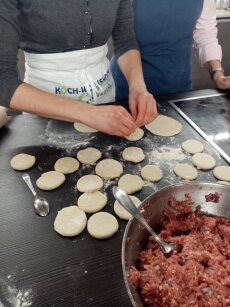
Twisting in the dumplings is easier for trained, Geogian hands
Image: Felix Anker -
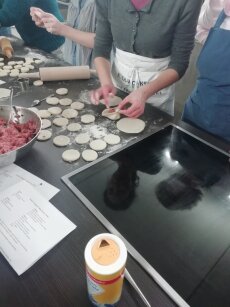
The twisting of the dumplings requires some dexterity
Image: Koordination Kleine Fächer-Wochen -
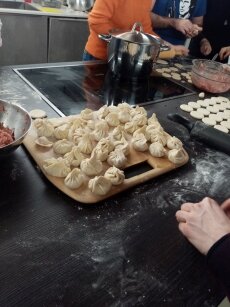
Many Khinkali make very full!
Image: Felix Anker -

Forms of Khinkali: round, twisted dumplings or "fish"
Image: Felix Anker -
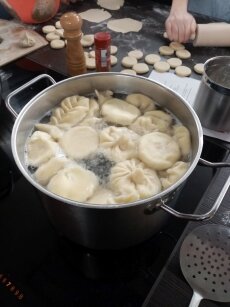
Upside down into boiling water for 10 minutes max.
Image: Felix Anker
-
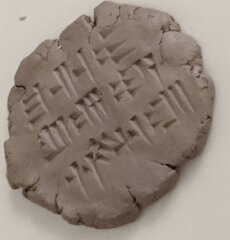
Moist clay has pros and cons: easy error correction, bur hardly evitable imprinting technique
Image: Seminar für Altorientalistik -

Cuneiform script demands patience, focus, technique ... and practise.
Image: Seminar für Altorientalistik -
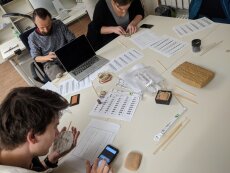
Original ancient objects, 3D models, styluses and moist clay
Image: Seminar für Altorientalistik -
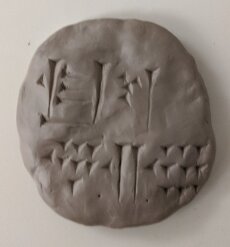
Cuneiform Script is directional in writing and reading ... fortunately!
Image: Seminar für Altorientalistik -
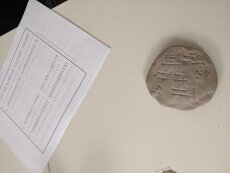
Writing your own name in cuneiform script? A table of transcription will help!
Image: Seminar für Altorientalistik -
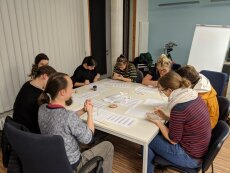
Creative Writing in Neo-Assyrian
Image: Seminar für Altorientalistik
-

Josef Jeschke brought a small selection of coins of the Oriental Numismatic Collection Jena with him to the lecture
Image: Koordination Kleine Fächer-Wochen -
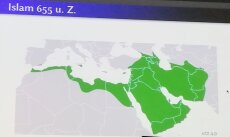
Expansion of the Arabic-Islamic World within the course of history
Image: Koordination Kleine Fächer-Wochen -
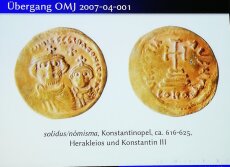
For a start of the Arabic-Islamic Numismatic Development Byzantine coins with Christian symbols were drawn on
Image: Koordination Kleine Fächer-Wochen -
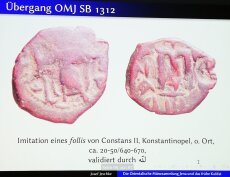
Next step: Imitation of Byzantin Coins with Arabic validation
Image: Koordination Kleine Fächer-Wochen -
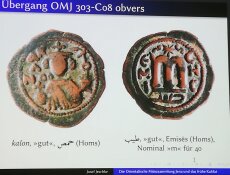
Now following: Bilingual Mintings
Image: Koordination Kleine Fächer-Wochen -
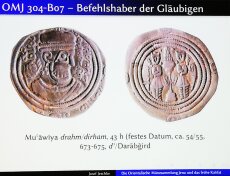
First "real" Arabic-Islamic silver coins, still showing pagan subjcts (tails: Fire Altar)
Image: Koordination Kleine Fächer-Wochen -
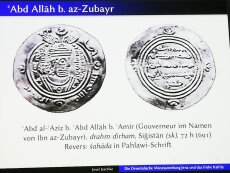
The Islamic influence prevails more and more: No more pictures on the coin's reverse but the šahāda instead
Image: Koordination Kleine Fächer-Wochen
-
Armenian Folk Dances
Image: Tamrika Atrahasis -
Gerogia. Small Country with a big heart.
Image: Tamrika Atrahasis -
Curious audience
Image: Tamrika Atrahasis -
Adj. Prof. Dr. Annegret Plontke-Lüning about her long-term experiences in Georgia
Image: Tamrika Atrahasis -
Adj. Prof. Dr. Annegret Plontke-Lüning about her long-term experiences in Georgia
Image: Tamrika Atrahasis -
Adj. Prof. Dr. Annegret Plontke-Lüning about her long-term experiences in Georgia
Image: Tamrika Atrahasis -
Quiz: How well do you know the Caucasus?
Image: Tamrika Atrahasis -
Quiz: How well do You know the Caucasus?
Image: Tamrika Atrahasis -
Lecture about the Chamalal people of Dagestan (Russia)
Image: Tamrika Atrahasis -
Lecture about the Chamalal people of Dagestan (Russia)
Image: Tamrika Atrahasis
-

The origins of cuneiform tablets is to be found in counters
Image: Koordination Kleine Fächer-Wochen -
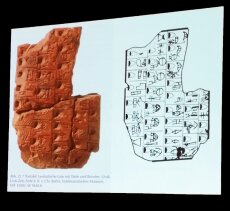
Lexical list with titles and professions
Image: Koordination Kleine Fächer-Wochen -
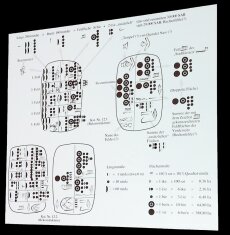
Early cuneiform texts were of economic-statistical intent
Image: Koordination Kleine Fächer-Wochen -
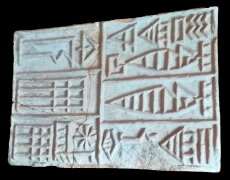
Brick Stamps determined the use of the bricks for a certain building
Image: Koordination Kleine Fächer-Wochen -
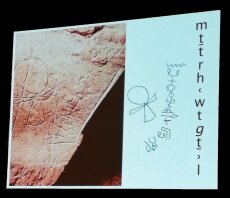
The earliest known inscription of an "alphabet" (dates ca. into the Middle Kingdom/Egypt)
Image: Koordination Kleine Fächer-Wochen -
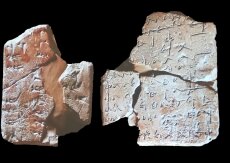
a bilingual tablet from the Parthian Period (cuneiform/Greek)
Image: Koordination Kleine Fächer-Wochen -
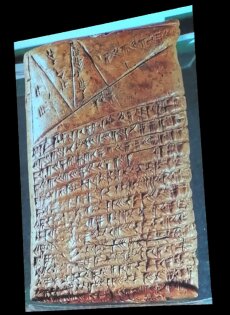
Even trigonometric discourses found their way onto cuneiform tablets
Image: Koordination Kleine Fächer-Wochen -
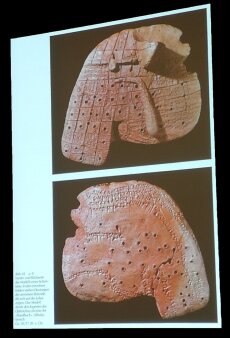
This hepatic modell of sheep served as a guideline for provoked omens
Image: Koordination Kleine Fächer-Wochen
-
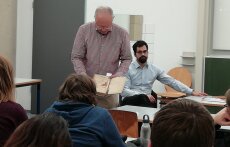
Prof. Dr. Tilman Seidensticker explains the structure of Arabic manuscripts
Image: Koordination Kleine Fächer-Wochen -
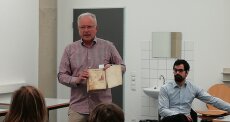
Prof. Dr. Tilman Seidensticker explains the structure of Arabic manuscripts
Image: Koordination Kleine Fächer-Wochen -
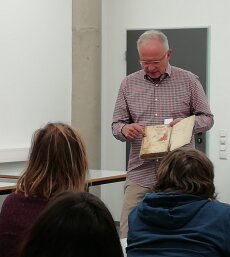
The first pages of Arabic manuscripts were often assigned with various annotations
Image: Koordination Kleine Fächer-Wochen -
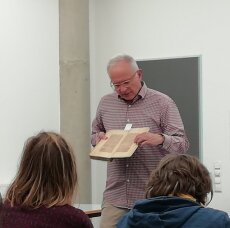
There are peculiarities even inside the manuscripts: attempts to justified text or red script to mark a new paragraph
Image: Koordination Kleine Fächer-Wochen -
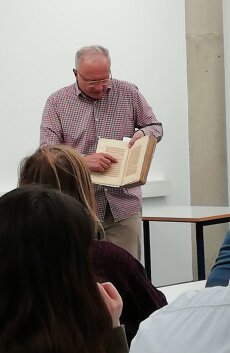
Copyists' side notes to certain text passages were marked by special symbols
Image: Koordination Kleine Fächer-Wochen -
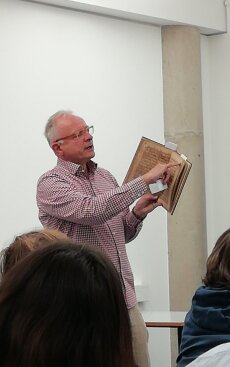
A unique phenomenon pf Arabic manuscripts: Listener Certificates!
Image: Koordination Kleine Fächer-Wochen -

Dr. Cornelius Berthold deals with Koran Manuscripts in miniature
Image: Koordination Kleine Fächer-Wochen -
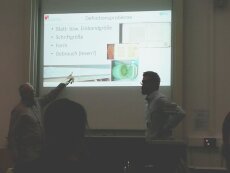
Occasionally the text was calligraphically written in the shape of another text with its own meaning: "script-scripturality"
Image: Koordination Kleine Fächer-Wochen
-
Prof. Dr. Thede Kahl opens the Theme Days
Image: Christoph Giesel -
Jena's Southeastern European Studies introduce themselves
Image: Christoph Giesel -
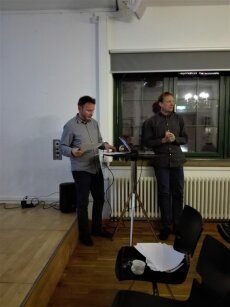
Prof. Dr. Thede Kahl and Dr. Christoph Giesel: "Should there be 'Turkey Slavistics'?"
Image: Gergana Börger -
Photo-Exhibition at the Campus
Image: Christoph Giesel -
Photo exhibition at the Campus
Image: Christoph Giesel -
Live Concert: Canticas de Sefarad
Image: Christoph Giesel -
Dancing Workshop accompanied by live music
Image: Christoph Giesel
Opening on 5 December: Documentary "Portavoce"
The Café Wagner provided the perfect venue for an evening that was dedicated to the recent culture of protest in Romania. For several year now, Romanians react increasingly critical – that is visibly critical – to the in many cases intransparent and corruption-beneficial governmental policy in their country. That's what Henry Rammelt, political scientist and sociologist, who deals with social transformations, political participation, social movements and especially with the civil society of Middle- and (South-)Eastern Europe, reports on. Together with Ruxandra Gubernat and Marcel Schreiter he portrayed some protagonists of this protest culture and had their say.
Preceding the cinema show was a lecture about the film's development that dealt (too) with the question how from curiosity and scientific interest finally emerged a film of good publicity that was to be seen on many festivals, and as well discussed the possibilities, maybe even the responsibility, of science to proceed into public with observations and analyses. by doing so, the evening lecture wove into the interdisciplinary seminar programme "Anthropology goes Public. Critical intervention about inequality and stereotypes with the EU" that took place in that winter semester in cooperation with the Department of Ethnlogy/Cultural Anthropology together with the Institute for Romance Studies, Department Romanian Studies.
-
Der Diskussions- und Filmabend stellte die Auftaktveranstaltung im Rahmen der Kultur- und Informationstage der Südosteuropastudien dar, deren Koordinator Dr. Christoph Giesel hier die Gäste begrüßt.
Image: Marcel Schreiter -
Jun.-Prof. Valeska Bopp-Filimonov (Rumänistik) stellt den Protestforscher Dr. Henry Rammelt vor.
Image: Marcel Schreiter -
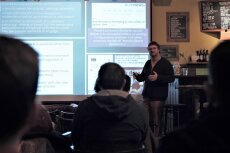
Analyse und Interpretation: Mit ihrem Protest bringen die Beteiligten den Wunsch zum Ausdruck, in einem „normal“-funktionierenden europäischen Land leben zu wollen.
Image: Marcel Schreiter -
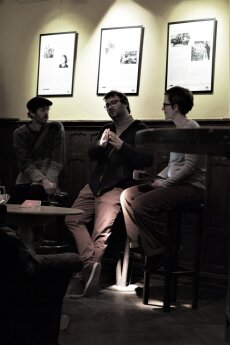
An den Film schloss sich eine rege Debatte an. Kritisch gefragt wurde unter anderem, ob das Modell Westeuropa nicht idealisiert werden würde: Profitieren wir hierzulande nicht über die Maßen von den vielen ihr Land aus Unzufriedenheit verlassenden Ost- und Südosteuropäern?
Image: Marcel Schreiter
-
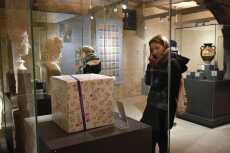
Audio Guides lead through the exhibition
Image: LS Klassische Archäologie -
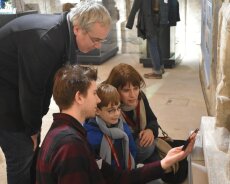
Short film clips bring the exhibits to life
Image: LS Klassische Archäologie -
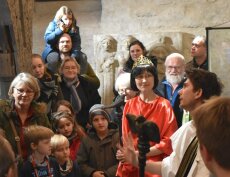
Domestic Quarrel on Mount Olympus – So let us talk about Athena now!
Image: LS Klassische Archäologie -
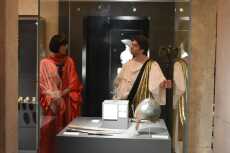
Domestic Quarrel on Mount Olympus – Dispute about Ares and Hephaistos
Image: LS Klassische Archäologie -
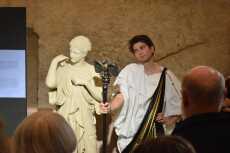
Domestic Quarrel on Mount Olympus – The resemblance between Zeus and his daughter Artemis is remarkable.
Image: LS Klassische Archäologie
Slavistics
Speech Science and Phonetics
View into the exhibition
Image: Seminar für Ur- und Frühgeschichtliche ArchäologiePre- and Early Historic Archaeology
At the Long Night of Sciences on 22nd November 2019 the Pre- and Early Historic Archaeology offered numerous exciting items on the agenda. About 200 people came for the "Night of the Open Door" into non-public Collection for Teaching and Viewing of the teaching building Löbdergraben 24a. Within the collection reference persons answered interested visitors' questions. Many took the chance of a guided tour through the collection by Prof. Dr. Peter Ettel. His lecture on "Archaeology of the Middle Saale Valley" (about 60 guests) and the lecture of Dr. Hans-Volker Karl about the topic of "Cynophagy – Eating Dogs" (about 30 guests) count as the night's hightlights. There was as well the opportunity to visit the recent exhibition "Against the Current – River Shipping in the Middle Ages".
All in all the Long Night of Sciences was a full success for the Pre- and Early Historic Archaeology. (by Maximilian Mewes)
Greetings by Vide-President for Study and Teaching, Prof. Dr. Iris Winkler
Video: University of JenaThe particular Science Slams are here to be watched!
-
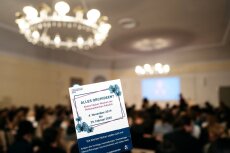
Great programme at capacity audience
Image: Christoph Worsch (University of Jena) -
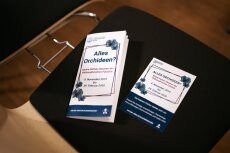
Postcard and Brochure
Image: Christoph Worsch (University of Jena) -
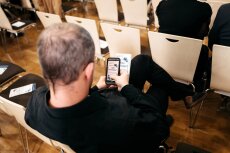
Spectator analyses Postcard
Image: Christoph Worsch (University of Jena) -
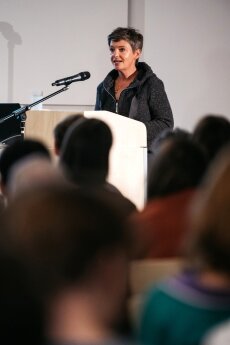
Welcoming by the Dean of Studies (Arts Faculty) Prof Dr. Eva Winter
Image: Christoph Worsch (University of Jena) -
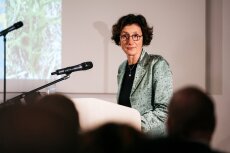
Greetings by the Vice-President of Study and Teaching Prof. Dr. Iris Winkler
Image: Christoph Worsch (University of Jena) -

Greetings by the Vice-President of Study and Teaching Prof. Dr. Iris Winkler
Image: Christoph Worsch (University of Jena) -
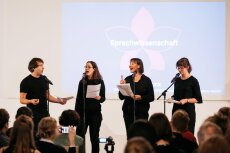
Glottis-Rock: Speech Science and Phonetics
Image: Christoph Worsch (University of Jena) -

Glottis-Rock: Speech Science and Phonetics
Image: Christoph Worsch (University of Jena) -

Caucasian Diversity – Caucasian Studies
Image: Christoph Worsch (University of Jena) -
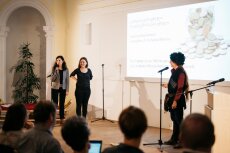
Caucasian Diversity – Caucasian Studies
Image: Christoph Worsch (University of Jena) -
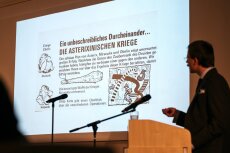
The first 1,400 years of Europe – Classical History
Image: Christoph Worsch (University of Jena) -
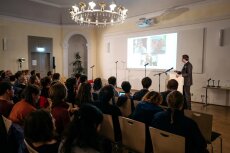
The first 1,400 years of Europe – Classical History
Image: Christoph Worsch (University of Jena)
